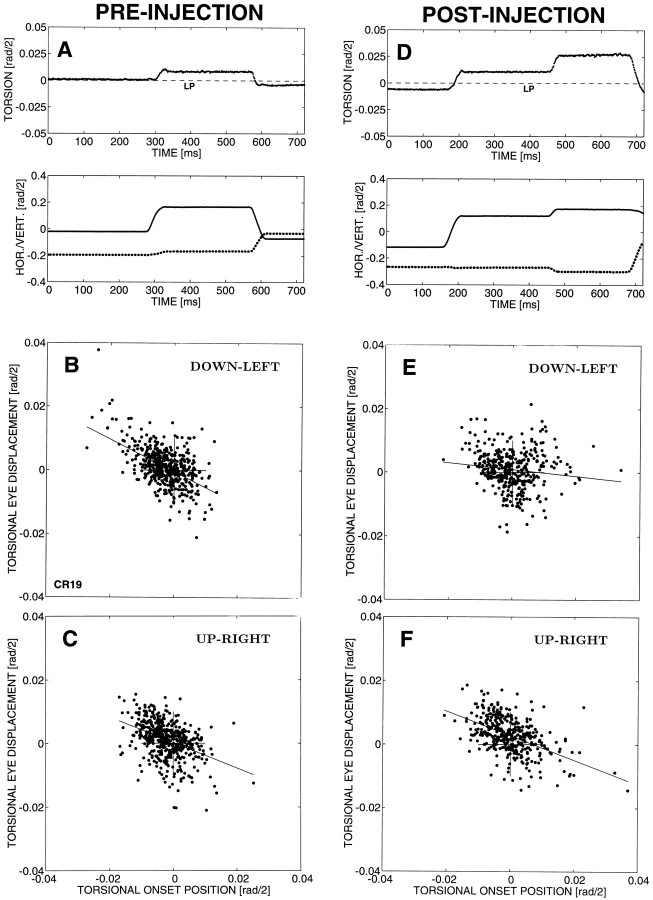Fig. 8.
Results of a 300 nl, 0.1% muscimol injection in the left cNRTP of monkey CR. Left panels show the properties of saccades in three dimensions before the injection, whereasright panels are the results obtained within the first 25 min after the injection. A, Example of a torsional reset movement (top panel) that keeps eye position near Listing’s plane (dashed line, LP), despite occasional imperfections of the 3-D saccade generator. Two consecutive saccades are shown [bottom panel: horizontal (dotted) and vertical (continuous) eye position]. Note different scales. In this example, the first saccade brings the eye to ∼1 deg in the positive torsional direction. This torsional position is maintained until the second saccade resets the eye towards Listing’s plane.B, The torsional displacement component,dx, for all saccades with left- and downward components are plotted as a function of initial torsional eye position, rx. Note that there is a strong negative correlation (r = −0.51;N = 506), indicating that the saccadic system actively resets the eye toward LP. The slope of the linear regression line is −0.54. C, Similar analysis for saccades with right- and upward components (r = −0.41; N = 505; slope = −0.40). D, After the injection, torsional eye positions are not always followed by a reset to LP, but may even increase substantially, as in this example, in which a downward saccade (at 170 msec) overshoots Listing’s plane by >1 deg, and the subsequent small right- and downward saccade (at 460 msec) brings the eye to almost 3 deg into the positive torsional direction. Such a sequence of events was never obtained in the preinjection data.E, Saccades with a left- and downward component appear to have a clear deficit with respect to the preinjection data inB (r = −0.12; N = 377; slope = −0.11). Large torsional “errors” are no longer reliably followed by a systematic reset to LP. F, No deficit is obtained, however, for saccades with a right- and upward componentr = −0.49; N = 384; slope = −0.38) or for saccades in the remaining two quadrants (data not shown; see Table 2). Note that in both E and F the torsional onset positions are extended into the positive direction.

